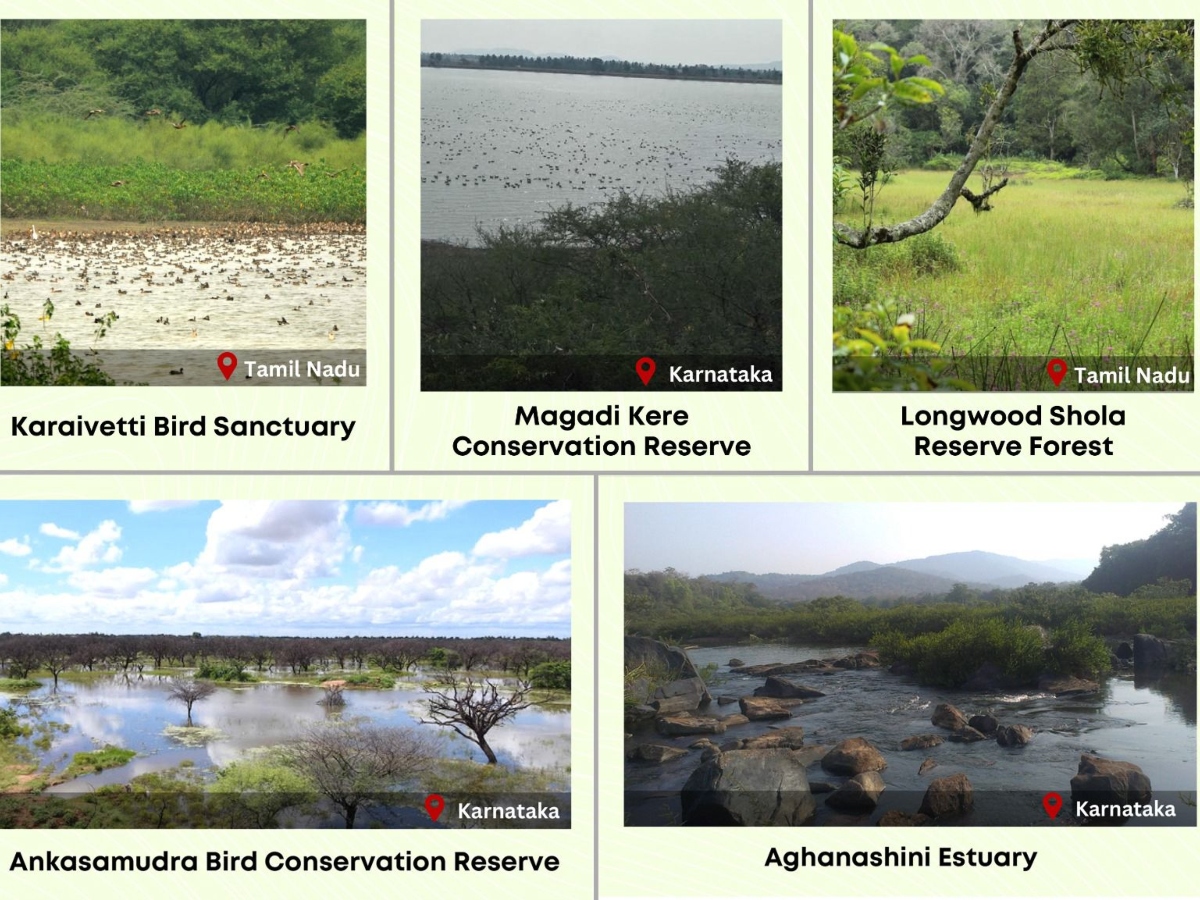- Five additional Indian wetlands have been added to the Ramsar Convention’s global list of wetlands of international importance, bringing the country’s total number of such highly regarded waterlogged ecosystems to 80.
- India is now the fourth-largest country on the Ramsar map, after only the United Kingdom (175), Mexico (144), and China (82).
- Tamil Nadu continues to have the most Ramsar sites (16), followed by Uttar Pradesh (10).
List of newly recognised Ramsar sites:
[1] Ankasamudra Bird Conservation Reserve (Karnataka):
- It covers 4,801 hectares at the confluence of the Aghanashini River and the Arabian Sea.
- Reduces flood and erosion risks, conserves biodiversity, and supports livelihoods.
- Supports 6,000-7,500 families through fishing, agriculture, and traditional fish farming.
- Provides a natural shield against storms and cyclones.
[2] Aghanashini Estuary (Karnataka):
- It covers 4,801 hectares at the confluence of the Aghanashini River and the Arabian Sea.
- Reduces flood and erosion risks, conserves biodiversity, and supports livelihoods.
- Supports 6,000-7,500 families through fishing, agriculture, and traditional fish farming.
- Provides a natural shield against storms and cyclones.
[3] Magadi Kere Conservation Reserve (Karnataka):
- A man-made marsh encompassing nearly 50 hectares, originally intended for rainwater storage.
- Home to 166 bird species, including 130 migratory birds.
- Common Pochard, River Tern, and Oriental Darter are among the endangered and near-threatened species protected here.
- A critical wintering habitat for the Bar-headed Goose.
[4] Karaivetti Bird Sanctuary (Tamil Nadu):
- With 453.72 hectares, it is one of Tamil Nadu’s largest inland wetlands.
- Allows groundwater recharging and helps agricultural activity.
- Contains over 198 bird species, including the Bar-headed Goose and Common Teal.
[5] Longwood Shola Reserve Forest (Tamil Nadu):
- Named from “Solai,” which means tropical rainforest in Tamil.
- Integral to the Western Ghats’ distinct biodiversity.
- The sanctuary protects globally endangered and vulnerable bird species such as the Nilgiri Laughing Thrush, Nilgiri Blue Robin, and Nilgiri Wood-pigeon.
- It is home to 14 of the Western Ghats’ 26 indigenous bird species.
Source: https://www.thehindu.com/sci-tech/energy-and-environment/five-more-indian-wetlands-added-to-ramsar-list/article67795594.ece

